<< Previous | Displaying results 2751-2775 of 6771 for "" | Next >>
"Ostarbeiter" (eastern workers) were mostly eastern European women brought to Germany for forced labor. They wore an "OST" identification patch (lower center of photograph) Germany, after 1942.
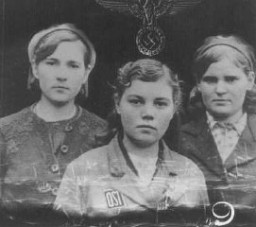
Aerial view of the city of Rotterdam after it was bombed by the Luftwaffe (the German Air Force). Rotterdam, the Netherlands, May–June 1940.
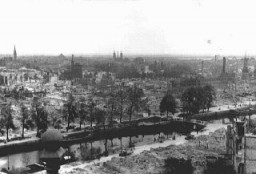
View of Rotterdam after German bombing in May 1940. Rotterdam, the Netherlands, 1940.

View of Rotterdam after German bombing during the Western Campaign in May 1940. Rotterdam, the Netherlands, May 1940.
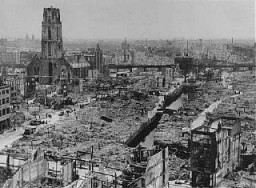
View of Rotterdam after bombing by the German Luftwaffe in May 1940. Rotterdam, the Netherlands, 1940.
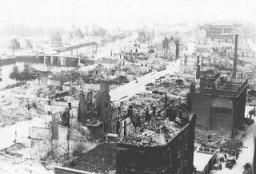
View of Rotterdam after bombing by the German Luftwaffe in May 1940. Rotterdam, the Netherlands, 1940.
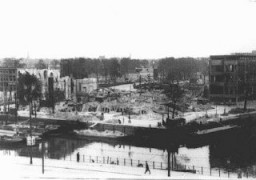
A view of part of the Maginot Line, a French defensive wall built after World War I. It was intended to deter a German invasion. France, ca. June 1940.
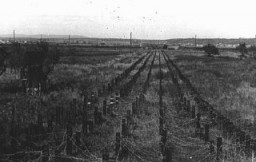
After the defeat of France, a German soldier examines French fortifications along the Maginot Line, a series of fortifications along the border with Germany. France, 1940.
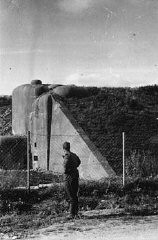
A view of the Maginot Line, a French defensive wall built after World War I. It was intended to deter a German invasion. France, 1940.
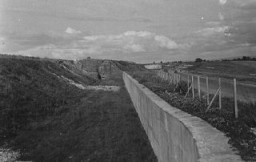

Adolf Hitler and his personal architect, Albert Speer, in Paris shortly after the fall of France. Paris, France, June 23, 1940.
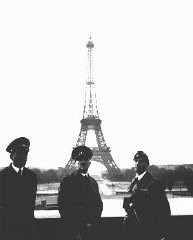
Antisemitic poster equating Jews with communism. The poster calls for the boycotting of Jewish interests. United States, 1939.

Antisemitic propaganda in the United States that presents President Franklin D. Roosevelt's declaration of a state of unlimited national emergency as the product of an international Jewish conspiracy to save world Jewry and to bring destruction upon America. United States, ca. 1938–41. Among the antisemitic declarations on the caricature are: "Jews Are The Cause of High Taxes - Slavery - Starvation and Death ---" "How long will the American people continue to tolerate this…
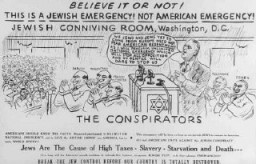
An antisemitic isolationist publication in the United States, ca. 1938–41. It blames Jews and Jewish interests for the war and advocates the boycott of Jewish businesses.

British Jewish leader Sidney Silverman forwarded to American Jewish leader Stephen Wise this copy of a cable originating from Gerhart Riegner, World Jewish Congress representative in Geneva. Riegner had sent through their respective governments two cables warning Silverman and Wise of Nazi plans to exterminate European Jewry. The US State Department delayed delivery of the cable from Riegner to Wise, who initially received this version. United States, August 29, 1942.
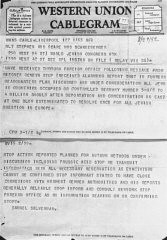
Jan Karski (standing), underground courier for the Polish government-in-exile. He informed the west in the fall of 1942 about Nazi atrocities against Jews taking place in Poland. Pictured in his office in Washington, DC, United States, 1944.
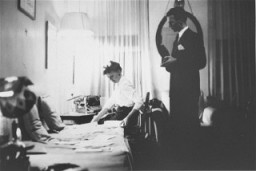
Breckinridge Long (1881–1958). Long was an Assistant Secretary in the US State Department during World War II, from 1940-1944. Between 1939 and 1942, Breckinridge Long implemented new State Department policies which prioritized US national security over humanitarian concerns. Photograph taken in Washington, DC, United States, August 1943.
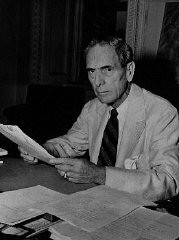
German children, behind an SS man, watch as religious objects from the Zeven synagogue are set on fire during Kristallnacht (the "Night of Broken Glass"). Zeven, Germany, November 10, 1938.
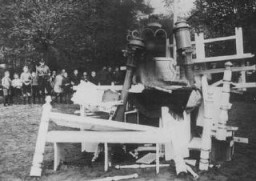
The synagogue in Oberramstadt (a town in southwestern Germany) burns during Kristallnacht. Oberramstadt, Germany, November 9-10, 1938.
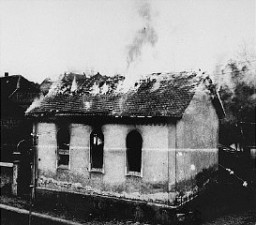
Jewish-owned shop destroyed during Kristallnacht, the "Night of Broken Glass" pogrom. Berlin, Germany, November 1938.
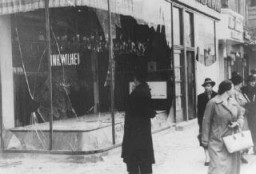
Interior of a synagogue destroyed during Kristallnacht (the "Night of Broken Glass"). Dortmund, Germany, November 1938.
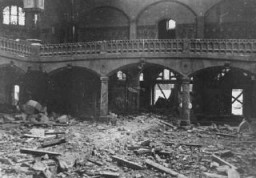
A knitwear store that was emptied and destroyed during the January 21-23 Iron Guard pogrom. Bucharest, Romania, January 1941.
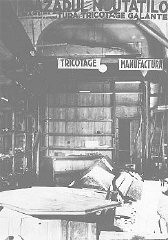
Sephardic synagogue destroyed during the January 21-23 Iron Guard pogrom. Bucharest, Romania, January 1941.
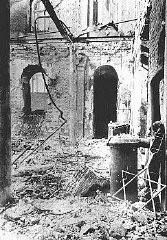
A woman mourns by the coffins of Jews who died in the Kielce pogrom. Poland, July 6, 1946.
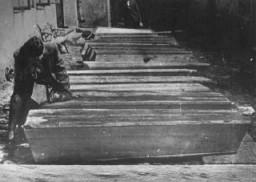
Coffins containing bodies of Jews killed in the Kielce pogrom. Poland, July 6, 1946. The mass violence of the Kielce pogrom drew on an entrenched local history of antisemitism–especially false allegations accusing Jews of using the blood of Christian children for ritual purposes (a charge known as a “blood libel”)–with the intent of discouraging the return of Jewish Holocaust survivors to Poland.
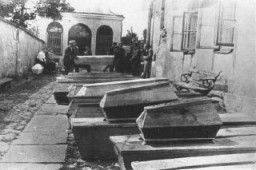
We would like to thank Crown Family Philanthropies, Abe and Ida Cooper Foundation, the Claims Conference, EVZ, and BMF for supporting the ongoing work to create content and resources for the Holocaust Encyclopedia. View the list of donor acknowledgement.